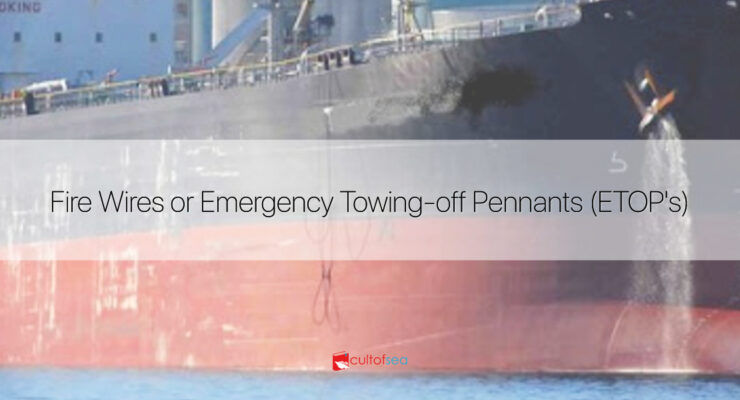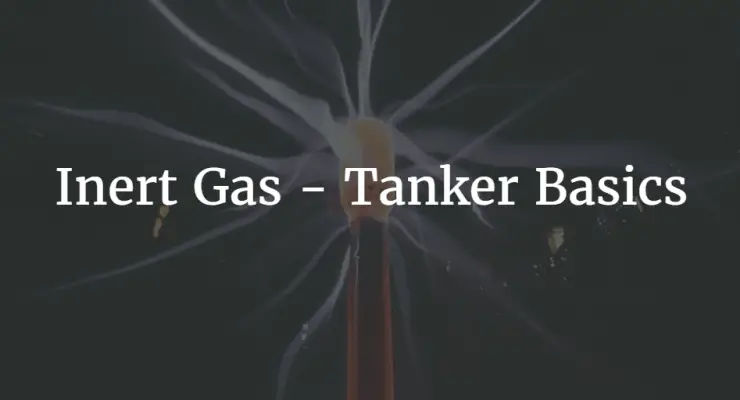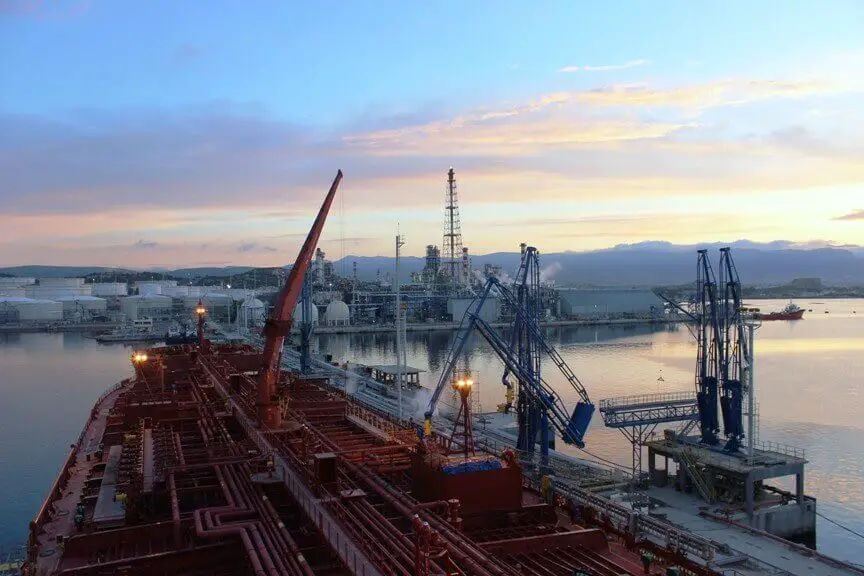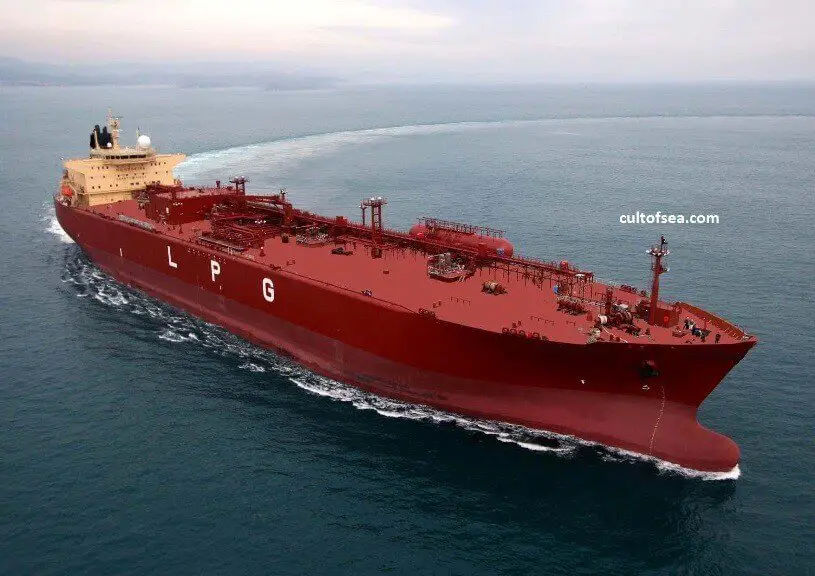Emergency Towing-off Pennants or ETOP's is usually referred to as “ Fire wires,” which provide a method of towing the vessel away from the berth in the event of an emergency. The intent of rigging fire wires or emergency towing pennants is to facilitate the movement of the vessel by tugs without the necessity of putting people on board to rig lines. In other words, it is used to assist tugs in the removal of the ship without the intervention of any crew member. Recommendations MEG 4 (4.7 Emergency tow-off pennants) OCIMF does not support the use of emergency tow off pennants although some … [Read more...]
SPM (Single Point Mooring) or SBM Operations
A Single Point Mooring Buoy consists of a buoy that is permanently moored to the seabed by means of multiple mooring lines/anchors/chains allowing cargo transfer of liquid petroleum products. The buoy contains a bearing system that allows a part of it to rotate around the moored geostatic part. When a Ship is moored to this rotating part of the buoy with a mooring connection, the vessel is able to freely weather-vane around the geostatic part of the buoy. Responsibility Master has the overall responsibility for the mooring operations of the vessel at the SBM.The officer-in-charge of … [Read more...]
Gas Tanker – Types, Tanks, Reliquefaction & Cargo handling opertions
Different Types of Gas Tanker Ships Gas carriers can be grouped into five different categories according to the cargo carried and the carriage condition. These are as follows:Fully pressurised ships Semi-pressurised ships Ethylene ships Fully refrigerated LPG ships LNG shipsThe first three ship types listed are most suitable for the shipment of smaller-size cargoes of LPG and chemical gases. This is normally accomplished on short-sea and regional routes. Fully refrigerated ships are used extensively for the carriage of large size cargoes of LPG and ammonia on the deep sea … [Read more...]
Gas Tanker Basics – Definitions and Hazards
Transportation of Liquefied Gases by Sea General For economical marine transportation, gas is carried in a liquefied state. As a liquid, the volume to weight ratio at atmospheric pressure is in the range of 650 times less than in the gaseous state. That means we can carry 650 times more cargo in the liquid state as compared to a carriage in the gaseous state.The temperature at which a gas condenses is a function of its pressure. The combination of pressurising and cooling is, therefore, fundamental to gas carrier design. Some ships carry gases liquefied under pressure & others under … [Read more...]
Inert Gas on board Tankers – All you need to know!
General Hydrocarbon gas normally encountered in petroleum tankers cannot burn in an atmosphere containing less than approximately 11% oxygen by volume. One way to provide protection against fire or explosion in the vapour space of cargo tanks is to keep the oxygen level below that figure. This is usually achieved by using a fixed piping arrangement to blow inert gas into each cargo tank in order to reduce the air content, and oxygen content and render the tank atmosphere non-flammable. Sources of Inert Gas Possible sources of IG on tankers and combination carriers are:Uptake gas from … [Read more...]
Glossary of Terms – Petroleum Cargo Calculations
Gross Observed Volume (GOV): The total volume of all petroleum liquids and sediment and water, excluding free water, at observed temperature and pressure.Gross Standard Volume (GSV): The total volume of all petroleum liquids and sediment and water, excluding free water, corrected by the appropriate volume correction factor (VCF) for the observed temperature and API gravity, relative density, or density to a standard temperature such as 60°F or 15°C and also corrected by the applicable pressure correction factor and meter factor.Relative Density: It is defined as the ratio of the … [Read more...]
Pre-Loading Cargo Handling Procedures on Oil Tankers
Voyage Orders The vessel will usually receive voyage orders from the Charterers which will contain the following information:-Ports of loading and discharge along with draft limitations (if any) Volume / Weight to be loaded, grade or grades and Densities involved Special requirements of cargo – e.g. heating Special properties of cargo – e.g. H2SPlanning Cargo Stowage The following factors are to be considered when planning stowage of cargo as applicable:The limiting load line zone of the loaded passage and the port of destination. Draft restrictions during the … [Read more...]
Cargo Conditioning, Reliquefaction – Gas Tankers
Purpose The term Cargo Conditioning refers to the "maintaining" during the passage of:Cargo quantity without undue losses. Cargo tank pressure/temp within design limits. maintaining or altering cargo temperature as required.This is achieved by reliquefaction. Cargo conditioning may not be necessary on ships with pressure vessel tanks, depending on filling limits.If reliquefaction plant is fitted the responsible personnel should have a thorough understanding of its operational principles. When running, the plant should be monitored so that anything affecting its safety or … [Read more...]
Static Electricity / Electrostatic Hazards
Static electricity is an imbalance of electric charges within or on the surface of a material. The charge remains until it is able to move away by means of an electric current or electrical discharge. Static electricity is electricity that does not flow in a current. Static electricity generated by rubbing two nonmagnetic objects together. The friction between the two objects generates attraction because the substance with an excess of electrons transfers them to the positively-charged substance. Usually, substances that don't conduct current electricity (insulators) are good at holding a … [Read more...]
What is Load on Top (LOT)?
Not all oil pollution is caused by tankers. However, the huge volume of crude oil transported by sea has created a major problem in disposing of dirty ballast and tank washings without harming the marine environment or damaging coastal amenities. Most crude oils contain wax and other materials in solution, together with sediments, which may settle out during the voyage and form a residue with any cargo remaining after discharge (of the order of 0.2 to 0.5 per cent of the cargo carried). If discharged into the sea in heavy concentrations in the course of tank washing the residue will stay on … [Read more...]









